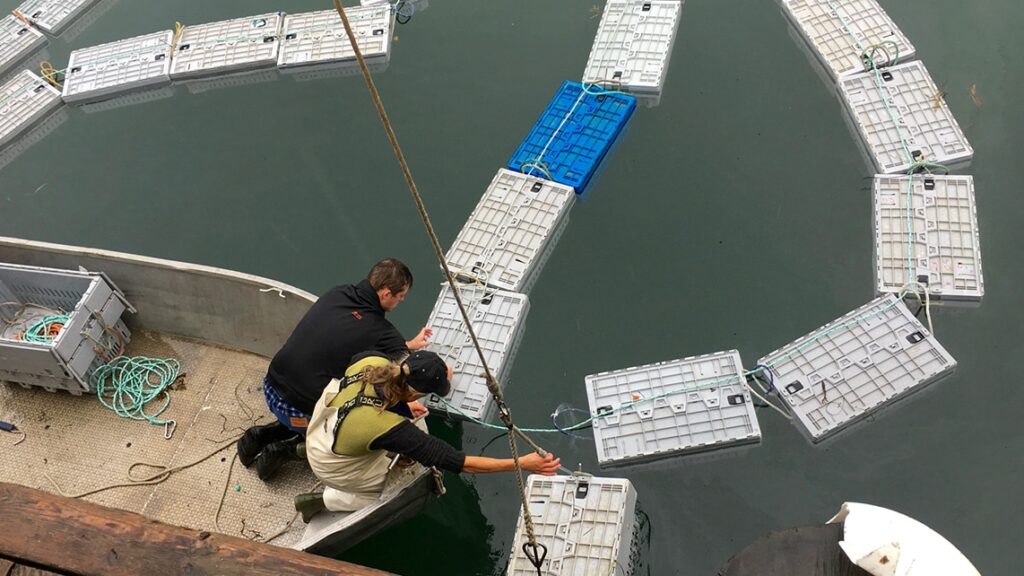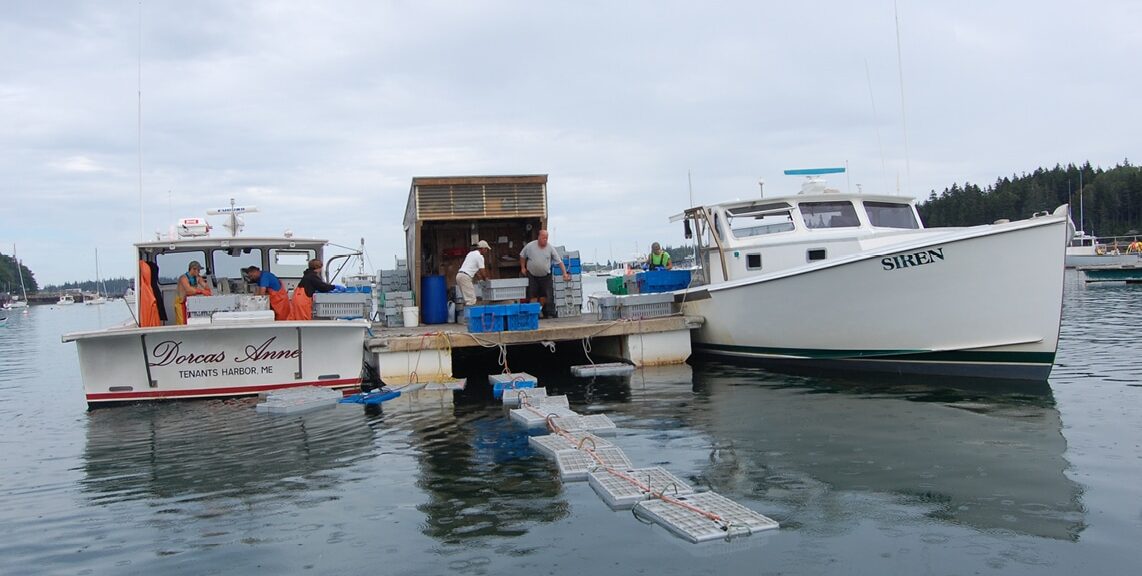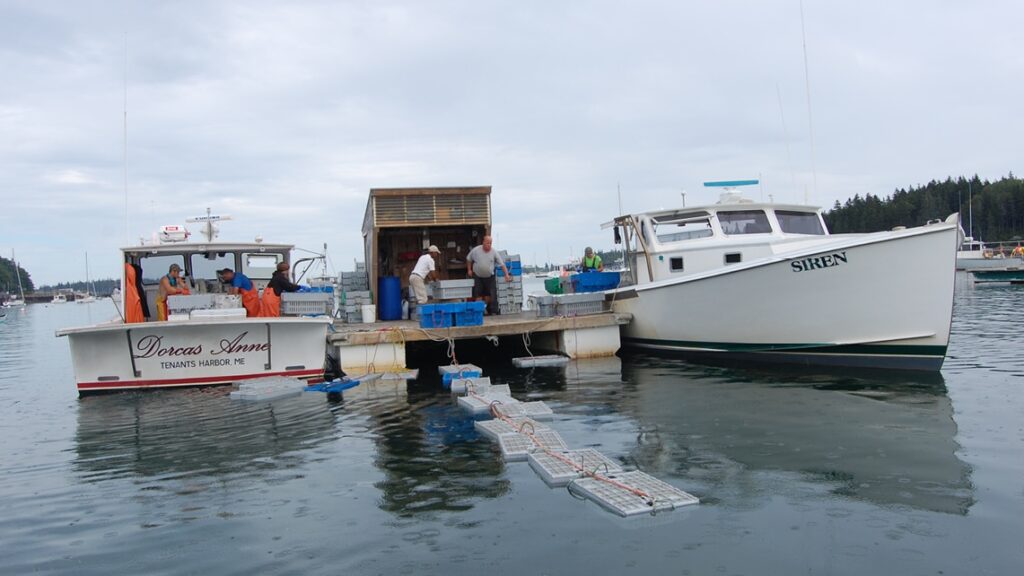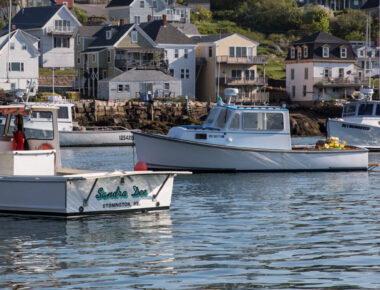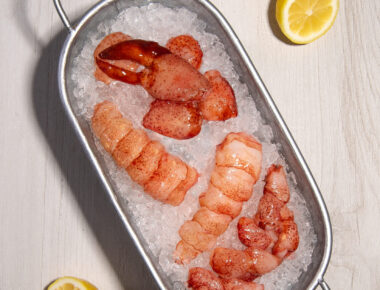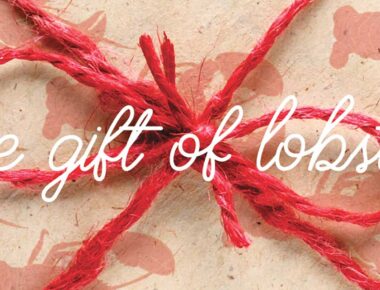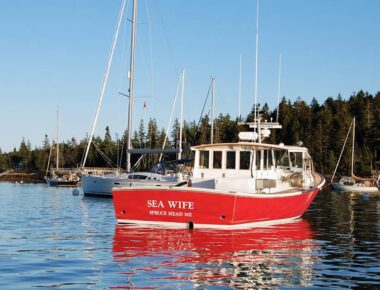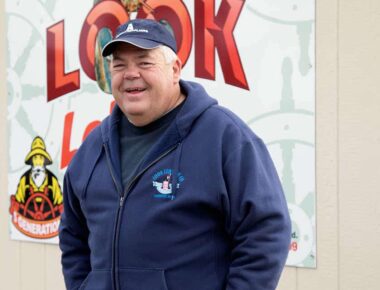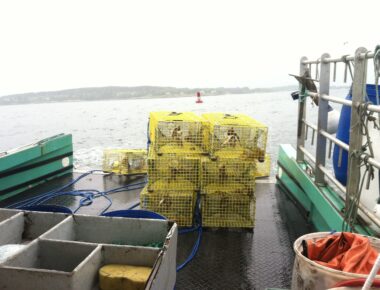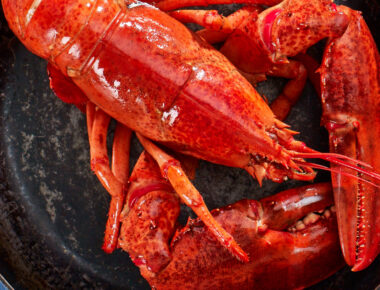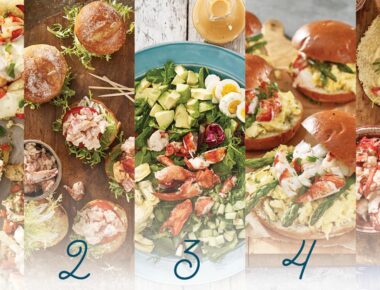When you see a postcard from Maine of a ‘quaint’ harbor and a few ‘old timers’ standing alongside a fishing wharf, that’s not a posed picture – it’s more the norm than the exception.
This is because one of the most distinguishing factors of the Maine Lobster fishery is our owner–operator requirement. The requirement means that if a fisherman gets sick, for example, he can’t have someone else go out and haul his traps. In order for those traps to be hauled, he has to be on his boat, fishing his traps himself. Given that Maine has 3,500 miles of coastline made up of small harbors and little coastal villages, it’s woefully inefficient from a business model perspective. However, the requirement has kept many downeast fishing villages economically viable. The fishery can be bought up and consolidated all the way down to the boat, but at the boat, it’s the way it’s always been – a lobsterman (or lobster lady) heading out to haul traps. Corporate America and our tendency towards operational efficiency gets left ashore.
With increasing consumer demand for traceable food products (know your famer/know your fisherman), the owner-operator nature of Maine’s lobster fishery, along with vastly improved shipping technologies, has become our industry’s advantage.
Recently, I spoke with Adam Laite, Director of Sales for Luke’s Seafood Co., which is the processing arm of Luke’s Lobster. Adam and Luke had just returned from a Whole Foods Market award ceremony in Austin, TX during which Luke’s Seafood Co. received two exceptional awards – the recipient of the retailer’s Purpose Driven Empowerment Award and the Supplier of the Year Award for perishable products. When I talked to Adam about these awards, he emphasized that Whole Foods’ commitment to ensuring the source of their products met their high standards was steadfast. “Whole Foods will sacrifice sales before they would ever compromise their ethics,” Adam told me. “That works well for us, and for Maine in general, because our lobster fishery is so sustainable.”
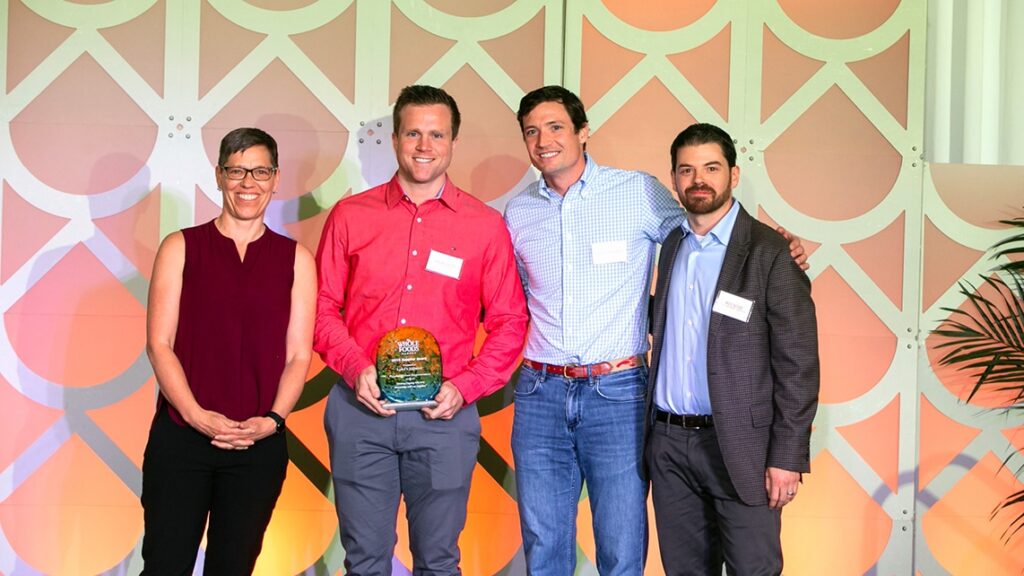
Coincidentally, I had been involved with the initial Whole Foods Market certification for Luke’s Seafood. A representative from Whole Foods Market had come to the Tenants Harbor Fisherman’s Co-op and had gone out hauling with one of the fishermen there to audit the boat and the process. Once that initial audit was successfully completed, each fisherman had to complete a form to confirm eligibility. Specifics relating to the amount of time between when a lobster if caught to the time it is processed, lobster handling, and operational procedures were all part of the criteria. Some of Maine’s island-based lobstermen, who fish for several days on the island and then bring their lobsters to shore did not qualify, due to the fact that the time from catch to processing had been too long in between.
For those who do qualify, we can easily ensure traceability back to the fisherman because the co-op tags each crate with the fisherman’s name when they came in. When the crates went to Luke’s Seafood Co., they are all tagged and can be sorted and traced through the processing facility. In this manner, Whole Foods Market consumers are assured their product is from a traceable, sustainable source.
For all the Maine Lobster industries inefficiencies, this owner-operator model works well. It works for Maine’s small coastal communities and it works for consumers who seek the peace of mind in knowing their lobster comes from a small coastal village in Maine — likely caught by one of the fishermen they might have seen in a postcard.
